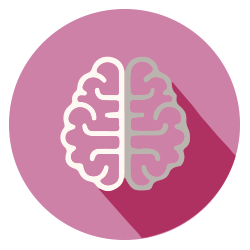If You Could Pick Just One Neuro Method – Which One Should It Be?
Relevant topics Research, Archive
Deciding whether or not to put a product in your shopping basket is often a split-second decision. If there’s one advantage neuromarketing has over traditional methods, it’s being able to measure objectively what happens during that split second.
One problem: the amount of research methods under the ‘neuromarketing’ umbrella grows ever more diverse. From skin conductance to EEG. From Facial Coding to Eye Tracking.
When deciding for a specific method, a marketer wants to know one single thing: how well does it predict actual purchase?
Two neuroscientists conducted an elegantly simple study to answer this very question. All people had to do in this experiment, was to watch a set of randomized products, while a wide array of neuro methods tracked how their brains, faces, hearts and eyes reacted.
Then, the scientists compared all methods in their predictive power on a subsequent choice task. Surprisingly, there was only one clear winner.
If you want to predict purchase choice, there’s only one thing you need to look at
Stand-alone, most methods only weakly predicted choice. Although fixation time, bodily arousal and smiling tended to increase for products that respondents subsequently chose, this relationship was far from impressive.
The exception? EEG. More specifically, the widely established frontal asymmetry metric was a strong predictor of subsequent choice. Relatively stronger brain activity in the left frontal lobe compared to the right was a telltale sign of a higher purchase probability. This very same measure has been found in many other publications as a key measure of approach related behaviors.
This study indicates that brain-based measures (EEG) are vastly superior to bodily measures such as GSR, eye tracking and facial emotions when it comes to predicting behavior. Although note that the latter measures could provide valuable add-ons to gain more qualitative insights.
What about brand differences?
That’s not all! The researchers added an interesting twist to their brand selection. Some brands where widely advertised national brands, whereas others where private label products.
The study replicated a thought-provoking earlier finding from Ravaja et al (2013): while EEG was a reliable predictor for all brands, this relationship was stronger for national brand products compared with private label.
What causes this difference? A likely explanation is that the purchase of major brands is driven more by emotion and habit than the choice for a private label. In other words: buying a Coca Cola involves more emotion than the choice for a can of Cott. As EEG seems to be particularly strong in capturing the more emotional choice mechanisms, this new data beautifully shows its high predictive power within that domain.
Key take-aways
- EEG single-handedly outperforms other neuromarketing methods (facial coding, eye tracking and GSR) in predicting choice
- EEG is particularly well-suited to research brands that are emotionally driven (for instance, national brands as opposed to private labels)
Further Reading
-
How to use sensory marketing tactics to create irresistible brands
In today’s day and age, the most successful brands are the ones that deliver feelings and emotions. By stimulating senses (like sight, hearing, taste), emotions will be delivered and learning will be stimulated. This is very effective, because our senses are directly linked to the limbic part of our brain that is responsible for memories, feelings, pleasure and emotions.


